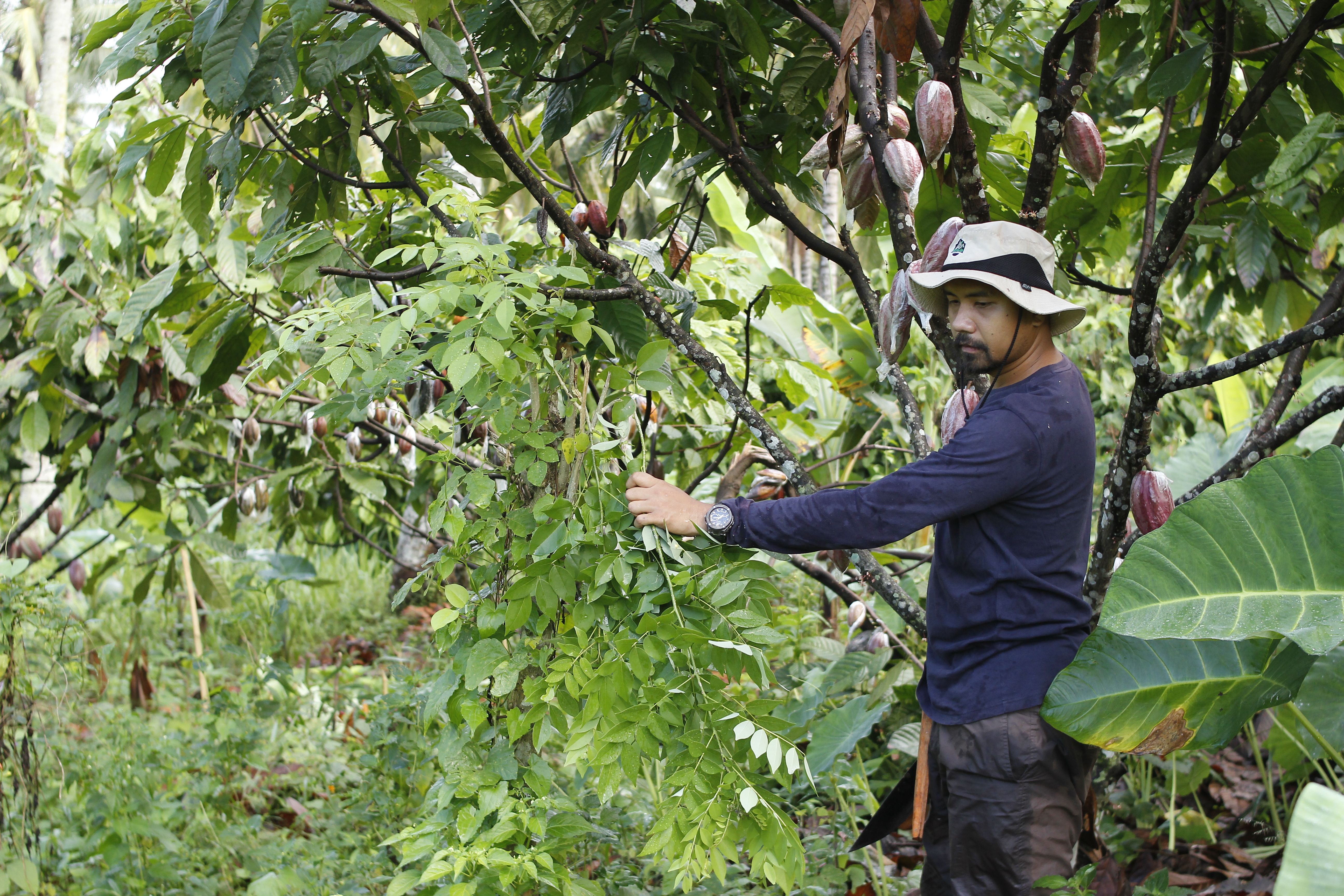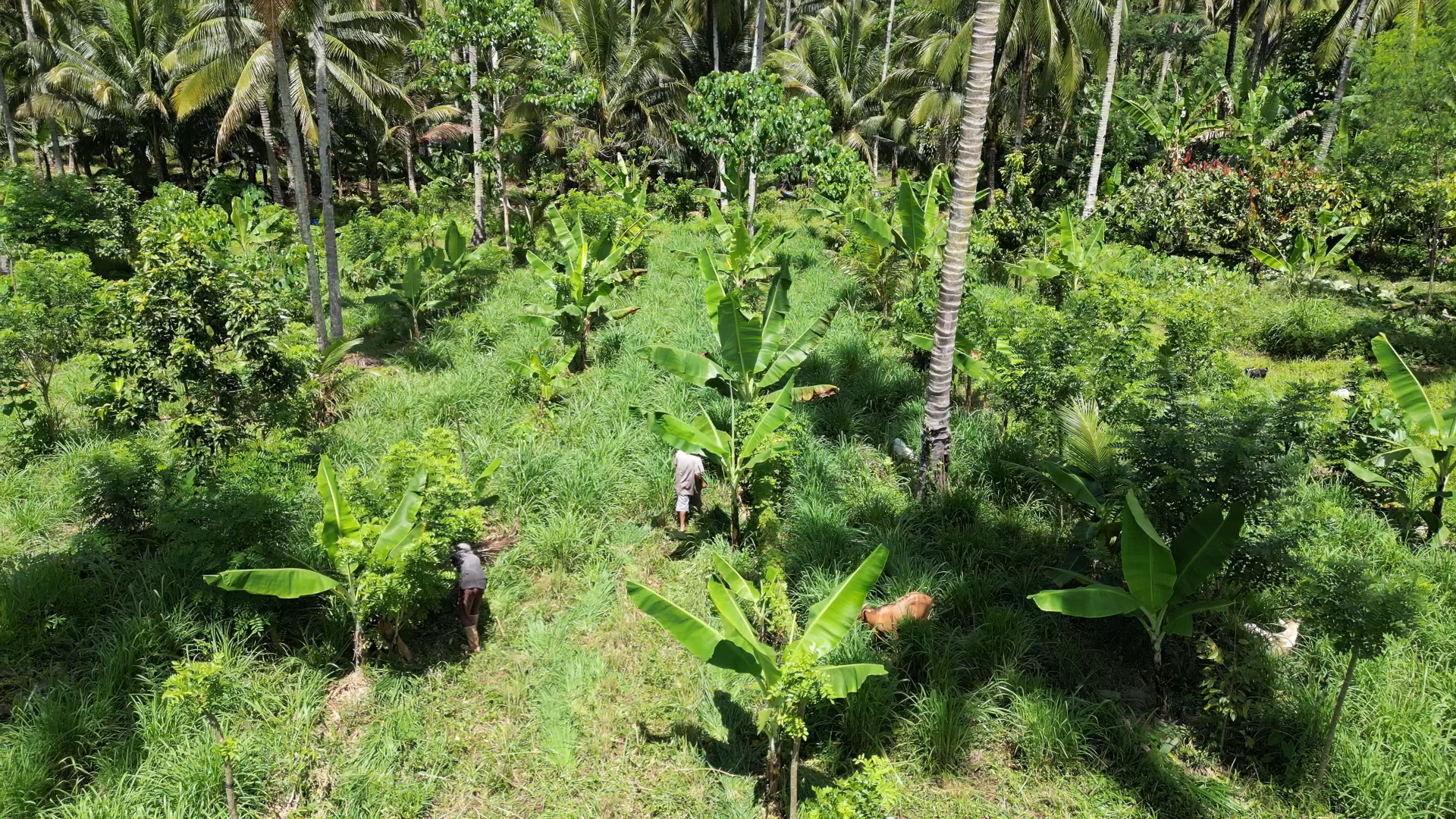
Marvi Rafael Montecillo and Rogen Montecillo are a husband and wife team behind the Anitu Food Forest. They're changing farming by using a method called syntropic farming, which mimics nature's balance. They grow various crops like coconuts, bananas, and cacao in their forest. This approach is both sustainable and profitable. By leading syntropic farming in the Philippines, they're not only producing food, but also showing how nature and farming can work together for a better future.
READ: Tuning into nature: Meet the Bukidnon couple pioneering syntropic farming in the country
Inspired by Ernst Götsch, a Swiss geneticist and farmer who developed the idea of syntropic farming, Marvi and Rogen share the benefits of this agricultural approach. At its core, this approach taps into nature's regenerative processes. The foundation of syntropic farming lies in the principle of syntropy, the accumulation, and organization of energy.
Syntropic farming practices
Syntropic farming encompasses a range of practices designed to foster resilience and sustainable growth. Syntropic farming operates on the principle of syntropy, which embodies life's innate drive to gather and organize energy, fostering a harmonious and flourishing order within ecosystems. This accumulation of energy is exemplified through the diversity and intricate interconnectedness of species, strengthening the ecosystem's resilience. Drawing inspiration from the natural ecological composition and structure, this method coordinates the gradual growth of plant species in a sequence that emulates nature's adaptive patterns, ensuring sustainable development and ongoing rejuvenation.
Constant Soil Cover. A cornerstone of syntropic farming is the practice of maintaining consistent soil cover. This is achieved through the strategic presence of organic matter and densely planted crops. This practice offers a multitude of advantages, including protection against erosion, moisture retention, and the nurturing of essential soil microorganisms. The result is a healthier and more conducive environment for plant growth.
Biomass production. Intensive management techniques, such as regular pruning and mowing. By prioritizing this practice, the system generates substantial organic matter. This, in turn, enriches the soil, fostering the conditions for robust plant growth and development.
The spatial arrangement of plants. An integral aspect of syntropic farming involves the meticulous spatial arrangement of plant life to ensure harmonious growth. For instance, taller and more established trees can be strategically positioned to provide shade and shelter for smaller, sun-sensitive plants. This could also involve placing ground-cover plants beneath taller crops, which helps prevent soil erosion, retains moisture, and suppresses weed growth. Moreover, in a syntropic farming system, the spatial arrangement could include planting nitrogen-fixing plants near crops that require high nitrogen content, thereby enhancing soil fertility naturally.
This careful synchronization of plant placement optimizes the utilization of available resources. Moreover, it minimizes competition among plants, leading to a balanced and flourishing ecosystem where each organism thrives without interference.

The transformational impact of syntropic farming
Self-sufficiency. One of the standout advantages of syntropic farming lies in its ability to create self-sufficient ecosystems. By harnessing the inherent capabilities of diverse plant species, this method minimizes the reliance on external inputs. Each plant contributes to various ecosystem functions, resulting in a balanced and self-regulating environment. This self-sufficiency not only reduces the need for external resources but also encourages a more sustainable and resilient agricultural system.
Biodiversity. The deliberate arrangement of diverse plant species not only enhances the ecosystem's overall resilience but also facilitates increased productivity. The symbiotic relationships formed between different plants contribute to the optimization of resources, leading to improved yields without resorting to excessive use of chemicals or synthetic inputs.
Soil restoration: The practice actively contributes to restoring soil fertility and health. The continuous addition of organic matter, facilitated by the decomposition of plant residues, replenishes soil nutrients and promotes the growth of beneficial microorganisms. This gradual enhancement of the soil's vitality results in improved soil structure, water retention, and overall ecosystem stability.
Syntropic farming offers a promising alternative approach to agriculture by aligning with nature's regenerative patterns, it presents a holistic and sustainable method. In a world challenged by environmental concerns, the principles of syntropic farming can guide us toward a more harmonious coexistence with the environment.
Photo courtesy of Anitu Food Forest